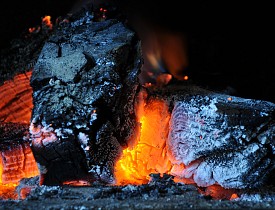Keeping the Home Fire Burning, Safely
 A fireplace can provide ambiance, warmth and a bit of style to a home. It can also be a liability if not properly maintained or operated. For instance, the tragic Christmas fire in Stamford, CT was a reality check for the NY metro area and the whole country. The blaze that killed two adults and three children was the result of improperly disposed of embers, and easily could have been prevented.
A fireplace can provide ambiance, warmth and a bit of style to a home. It can also be a liability if not properly maintained or operated. For instance, the tragic Christmas fire in Stamford, CT was a reality check for the NY metro area and the whole country. The blaze that killed two adults and three children was the result of improperly disposed of embers, and easily could have been prevented.
The US Fire Administration (a division of FEMA) releases data concerning a number of fire related issues each year. The most recent data available, 2010, shows an overall decrease in home heating fires. They reported 46,800 fires, 145 deaths and over $325 million dollars in damages for 2010; much better than 2007 when over 54,000 fires were reported. It’s a great improvement but there is still a long way to go. To keep from being part of next year's statistics, some simple guidelines will keep your home and family safe when you're using a fireplace or wood stove.
1. Keep Fireplaces and Wood Stoves Clean
Creosote accumulations in the chimney can lead to chimney fires, which then spread to the home. Burning your fire at proper temperatures (yes, there is more than one temperature of fire) can reduce the accumulation of creosote. Well-seasoned firewood burns cleaner, and therefore contributes less to creosote accumulation. Having your chimney inspected (and or cleaned) regularly can also reduce the chance of a creosote fire.
Another main contributor to fires is from debris or materials stored near the fireplace. A Christmas stocking hung from the mantle may look cute and seasonal, but if it extends into the danger zone near the hearth opening it can act as a "fire ladder" and lead to other combustibles, which are normally out of this danger zone. The same rule applies to objects set on or near the hearth. I have seen many homes decorated with candles and decorations set on the hearth, too near to the fireplace opening in many cases. The size of a fireplace’s hearth is dictated by code, and takes into account the size of the fireplace’s opening. Maintaining these clearances is a key to safe operation.
2. Use Glass Doors and Metal Screens Properly
Many fireplaces have glass doors that limit air transfer when the fireplace is not being used. In most cases metal screens back these up. The metal screens reduce the chance of hot embers being ejected from the fire and landing on combustible materials in the room. It is generally recommended to operate the fire with the glass doors open and the metal screens closed. Open glass doors to allow for proper airflow and reduce the effects of back drafts. Adequate airflow also allows for proper burn temperatures. If your fireplace’s metal screen is damaged or missing, you are exposing yourself to additional risks.
If you are burning in a wood stove, operate the stove with the doors closed. Some stoves may need to be lit with the door ajar, to allow them to draw air initially, but once the fire is established the door(s) need to be closed.
3. Use a Flue Thermometer
Wood stoves as well as standard fireplaces can also benefit from the installation of a flue thermometer. These provide additional information on the condition and efficiency of your burn and can be used to prevent “cool” fires that can lead to creosote build up.
4. Dispose of Ashes Properly
Like the Stamford, CT Christmas fire, many house fires occur each year due to improper ash removal and storage. Hot ashes dumped in a paper sack and then dumped in the garbage can in the garage have ruined many people’s day…and home. In the case of the Stamford fire, the ashes were stored in a paper bag in a combustible mudroom area. If you are a regular user of the fireplace, chances are you will need to remove ashes that have not cooled for a few days. In my home we burn fires in the wood stove nearly 24 / 7 during our 9 months of the heating season. Ashes get transferred to a metal ash can and then are either allowed to cool for a few more days, or are dumped onto the snow bank at the end of the driveway.
The location of your ash dump needs to be free from any form of combustible material. The area we use is 100% dirt and rocks and posses no risk to the yard or neighborhood. Dumping hot ashes onto a compost pile should be avoided, as these materials may still burn. I have seen coals remain “red hot” and viable 4 and 5 days after some fires in my wood stove. They lie buried in white ash, which acts as an insulator, and can come back to life with ease. One sure way to ensure your ash is cool is to give it a proper burial at sea. Flood the metal ash can with a few gallons of water, stir and then repeat if needed.
As Smokey the Bear says on the many forest service signs near my Denver area home, make sure your fire is out…"DEAD OUT".
Kevin Stevens is a Denver-area carpenter and writes for Networx.com.
Looking for a Pro? Call us (866) 441-6648

Roofing Average Costs
Roofers Experiences

Tile Installation For New Kitchen Backsplash And Guest Bathroom Floor

Tree Removal For The Last Part Of A Poor Old Mulberry



